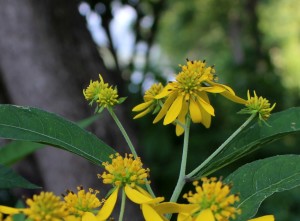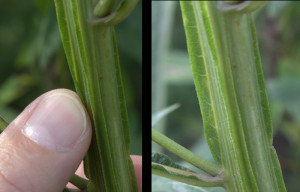How To Know Native Wingstem
Sunflowers love sun. Their happy faces point toward the rising sun in unison. If you’ve ever been in the center of a field of sunflowers, you know it’s a simple thing to make you smile.

(Click on any image to see a larger view.)
Surprisingly, some sunflowers exist that prefer it a little shady. A sunflower that has the odd name of Wingstem is one that needs partial shade instead of full sun.
As a member of the Aster family, Asteraceae, it’s a composite flower, like any other sunflower. The rays and disk being bright yellow.
The perennial Wingstem, Verbesina alternifolia, can be found in thickets, woodlands where some light filters through the tree tops, at the edges of fields and forests, and in pastures.
OK. Wingstem isn’t a true sunflower, but it sort of looks like one. I know I called it a sunflower before knowing it’s true heritage.
Not a humongous plant with giant flower seed heads like the sunflowers raised commercially, Wingstem may bloom at a height of 2 to 10 feet with flowers that are 2-3 inches in diameter.
A defining characteristic is easy to spot once you know what to look for when identifying Wingstem.
Check out the main stem and feel the leafy wings that run the length of it. The wings appear to be very thin vertically-oriented leaves that can be moved to the side with a finger or thumb.

Wingstem is native to eastern North America and can be found blooming from late summer through the middle of fall, say August to October.
Populations of Wingstem seem to managing well in our changing climate, all except for the New York wingstems that are classified as Threatened.